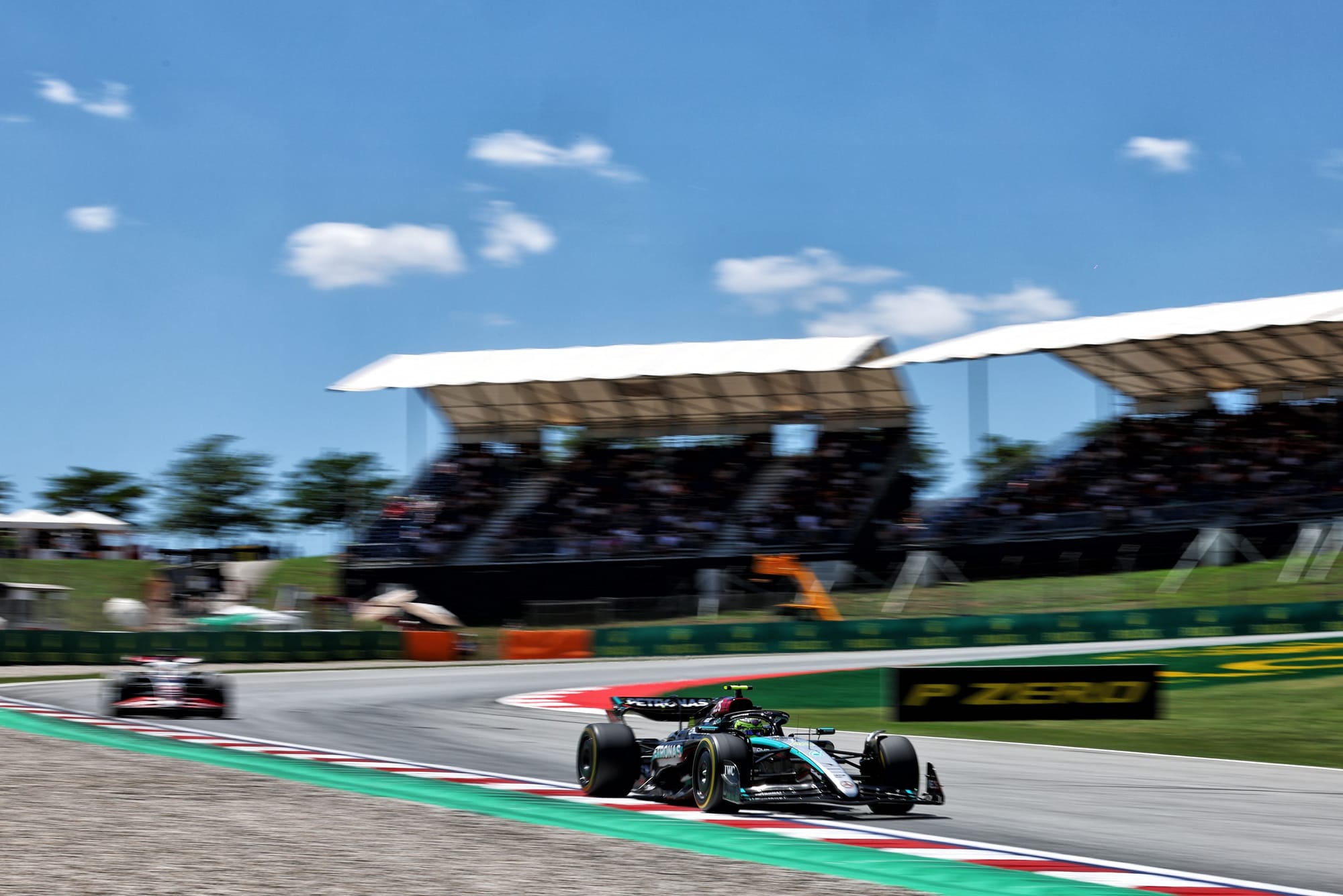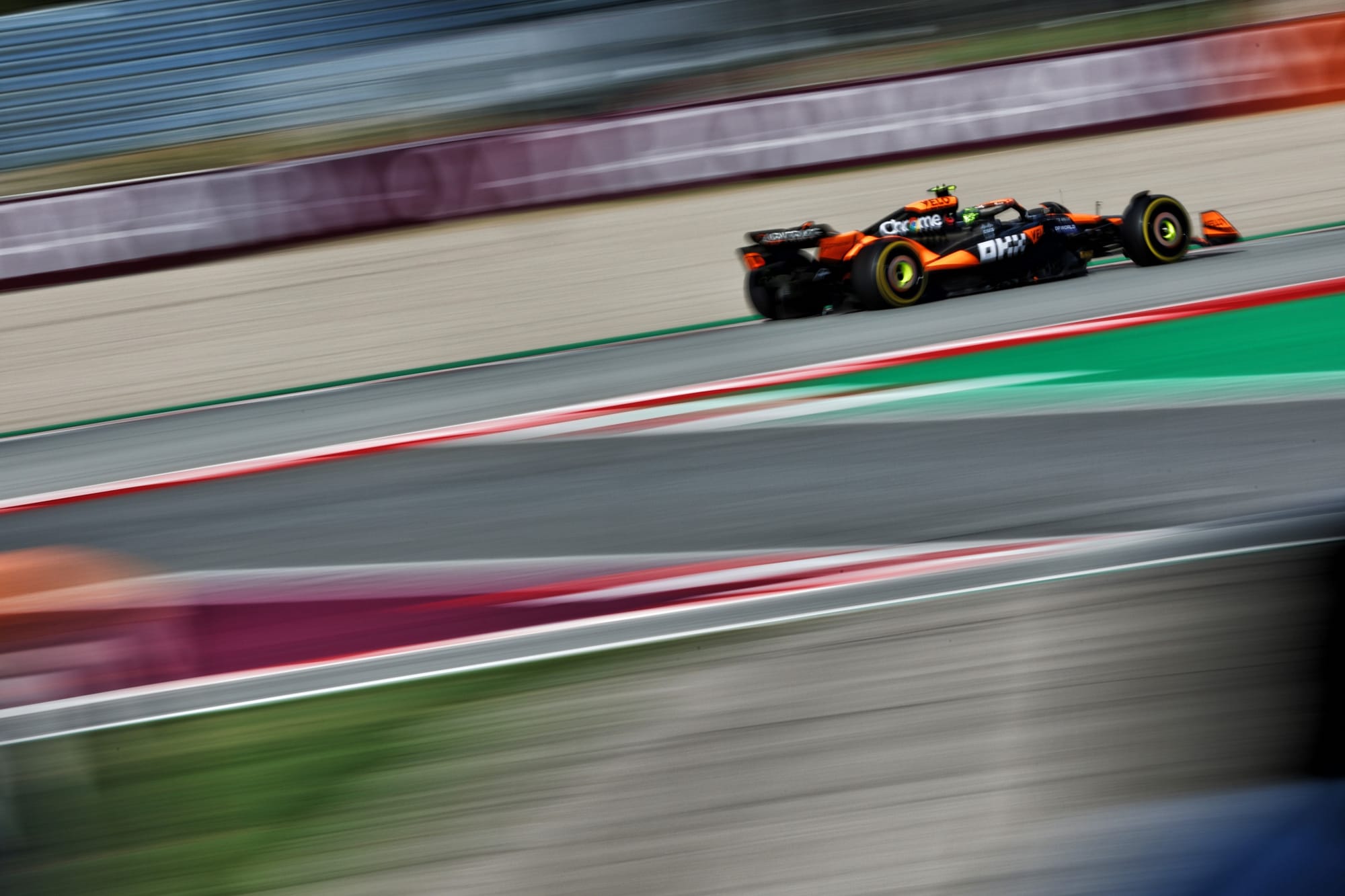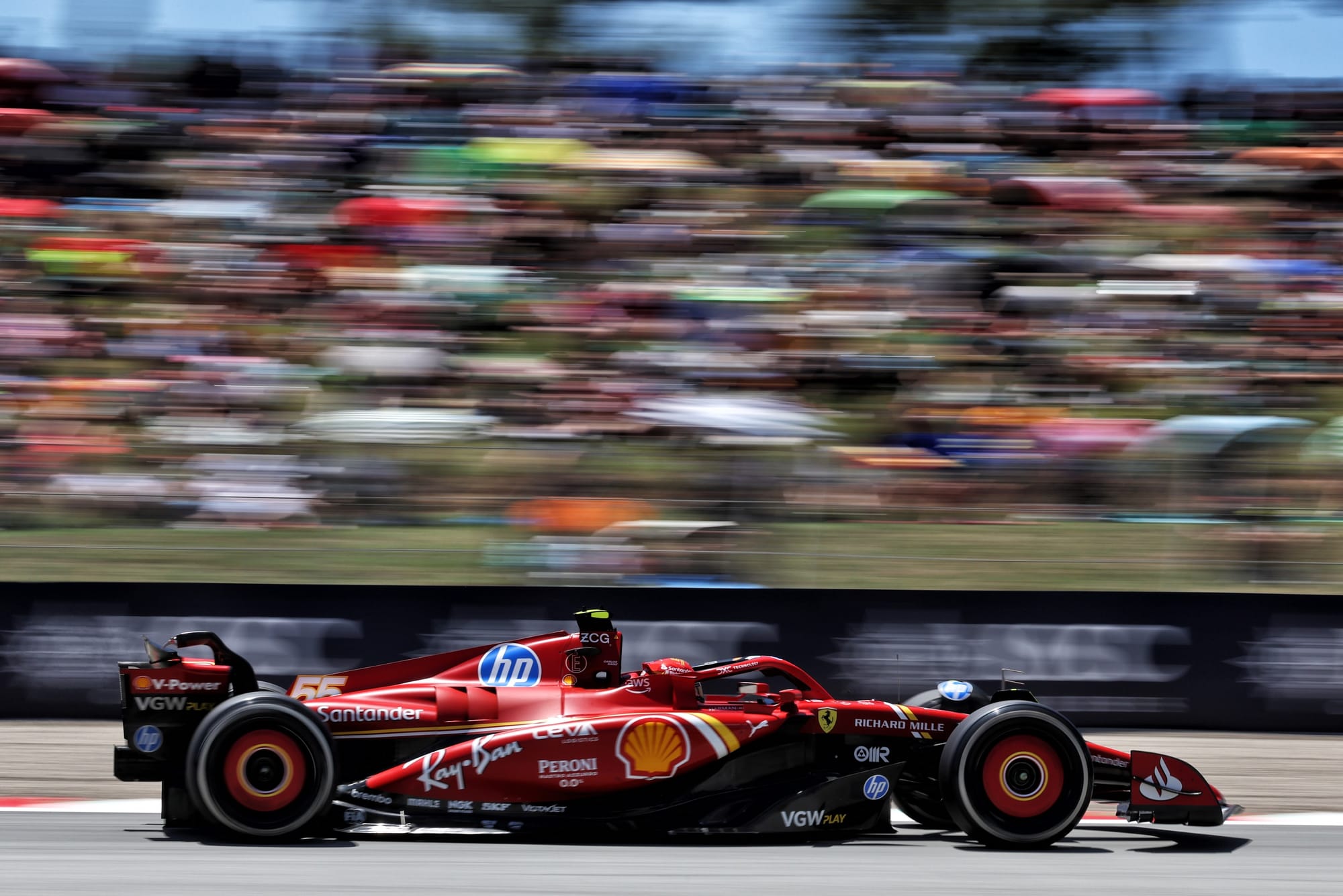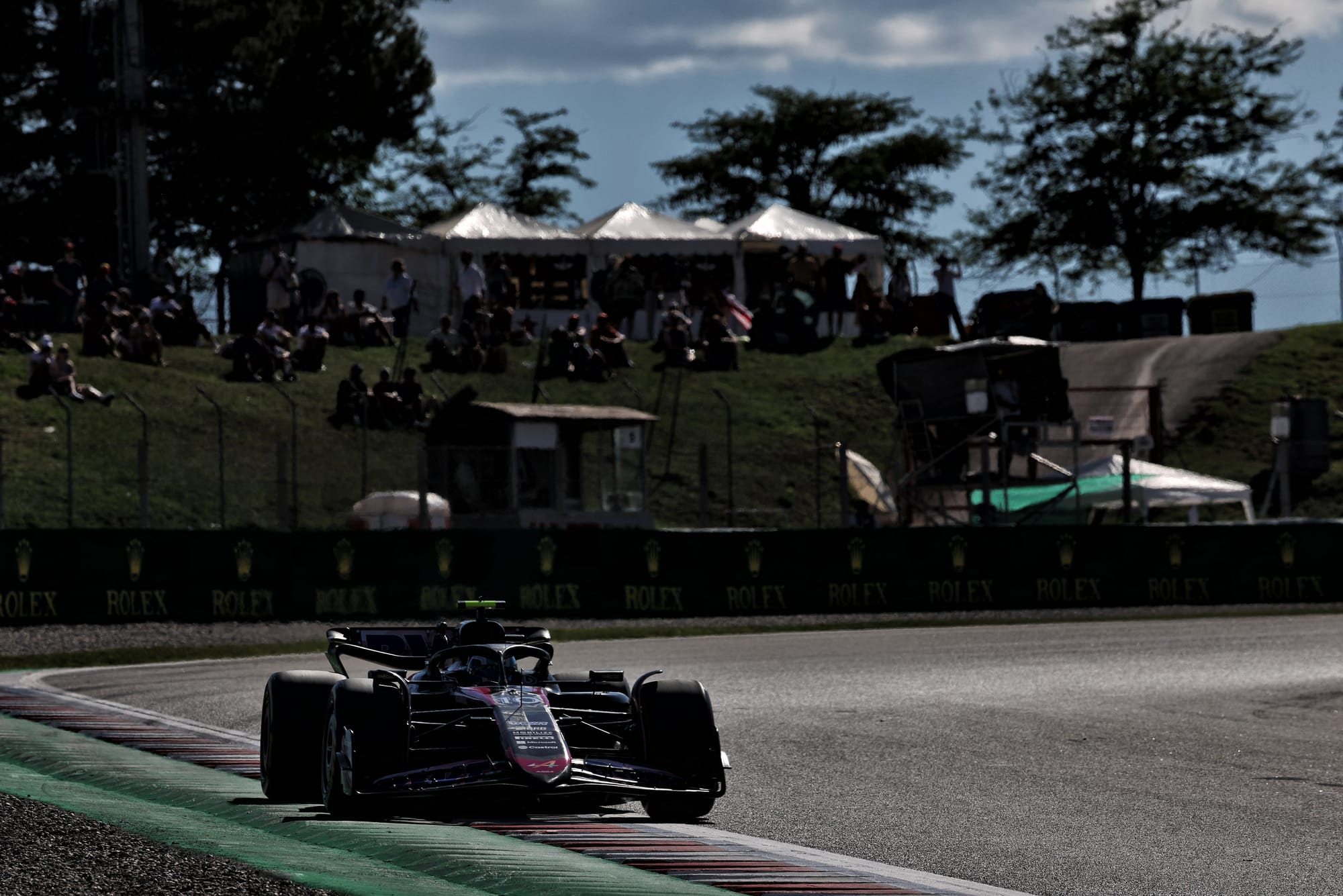Wow! It was a fascinating session, as the extreme demands of a very hot Barcelona circuit gave us some very interesting patterns, not all of which were expected.
It also exaggerated a trait of this year’s crop of cars that could be fundamental to how the field has closed in on Red Bull in recent races. Because far from giving the RB20 the chance to spread its wings, as many hoped, the circuit presented essentially the same balance difficulties for the team as all these recent races. The Red Bull certainly doesn’t seem faster than Ferrari or McLaren and perhaps barely faster than Mercedes.
Lewis Hamilton led the times, but his race – like that of fourth-fastest Pierre Gasly – took place just as the track’s grip was increasing due to the drop in temperatures late in the afternoon. In the crucial three or four minutes after their race, the track temperature dropped a seemingly crucial 3°C.
Trying to even out track conditions is an imprecise science, but the Mercedes looked the least competitive here – which will surely be a relief for the team after its pole position in Montreal. The worry was that the limited speed range in the corners of this track might have given a false picture and that the more serious demands of Barcelona would give it away. But while no car seemed well balanced here, the Mercedes was actually better than most.

This balancing act that everyone faces is the interesting thread that, if left unresolved, can give us some insight into understanding what’s going on here.
A track temperature of 46°C to 47°C around a circuit with such long and fast corners will always be horribly taxing on the tires, especially the left front. This is especially true since Pirelli has stipulated a very high minimum pressure of 25 psi for these fronts. What makes the situation even more nightmarish for the front tires is that all cars, to a greater or lesser extent, suffered from understeer.
It has become clear over the course of the season, as teams have managed to run their cars ever lower, that there is a greater conflict than ever between low- and high-speed cornering behavior. Cars have become more responsive as everyone enjoys the benefits of the vastly increased underbody downforce available in that small clearance space at the tunnel throat.
Getting a front bite at low speeds tends to make it an unstable grip at high speeds.
Car front fenders become too effective at high speeds when the car is lowering, but not effective enough at low speeds. The Mercedes W15 was once the poster child for this bad behavior and that’s what the new front wing was aimed at. This is why the flexibility of the front wing suddenly became an even more studied feature. You want the wing to start stalling at high speed because it is trying to work too powerfully when it enters ground effect.

This window of opportunity is tiny this year – much smaller than in the first two years these regulations were in effect.
As teams have found ways to run lower, it has highlighted a new set of problems. The aforementioned aerodynamic balance is one. The other is that the suspension is sufficiently compliant over bumps – and the Red Bull is the poster child for that issue.
Barcelona appear to be showing us that the RB20’s downforce advantage is no longer significant – and that the aerodynamic balance issues everyone faces might actually be even more acute on the Red Bull than, say, the Ferrari or McLaren. Perhaps exacerbated by this suspension intolerance at very low ride heights.
In the past, the Red Bull’s underbody allowed it to ride lower than the others without reaching the rebound threshold. But now that everyone can have comparable levels, the trend has changed.
Bringing together the best times in the sector, Max Verstappen is slightly faster than the McLaren of Lando Norris at the head of the peloton. But that probably means less than usual because here there’s always a trade-off between how hard to attack in the first sector and how much grip you have at the end of the lap.

Optimal grouping of sectors is not simply about being as fast as possible in each of them. This was even more true on Friday due to the extreme track temperatures and the aforementioned balance conflicts.
Verstappen spent much of the session complaining about understeer, particularly in turns 3 and 4. He was lightning-fast during the big Campsa aero test (turn 9), but – according to the Friday’s state of affairs – if the RB20 is a potential pole car, it seems that it would take all of Verstappen’s dexterity to get out of it this lap.
The difficulty of finding this balance was highlighted by the fight of Sergio Pérez, who commented: “We made a lot of changes and we lost track of them. We have to extract all the elements from it tonight.
The McLarens and Ferraris seemed a little more harmless and coherent. Norris and Carlos Sainz completed a long run on soft tires at the same time. The Ferrari was consistently faster at the start, but after seven laps the McLaren began to claw back whatever the Ferrari had gained. This suggested that two identical cars would be driven with a slightly different emphasis on tire use.

George Russell – whose qualifying simulation lap was marred by a major oversteer problem – was hampered by his brakes on the long runs, so Mercedes’ photo must be taken of Hamilton’s run a little later than those of Verstappen, Norris and Sainz. It didn’t look that fast, but it pretty much felt like it.
The prospects are therefore quite fascinating. Temperatures should be less extreme for the rest of the weekend, so perhaps the very strong deterioration we saw on Friday will be mitigated. But these extremes have been very useful in suggesting what determines performance. Aerodynamic balance and very high downforce are simply not compatible. But that huge endorsement is there tantalizingly, so teams pursue it. Hard.

Perhaps Gasly’s Alpine position, although flattered by his running order, shows what can be achieved by prioritizing balance. Certainly, the RB’s upgrade – which in theory should have been more aerodynamically powerful – only seems to have given it balance problems.
Then there is Aston Martin, in great difficulty, about a second off the pace, with Fernando Alonso in ruins: “We are far from our window of balance. We have a lot of things to sort out.
Barcelona surprised everyone. It’s really fascinating.
